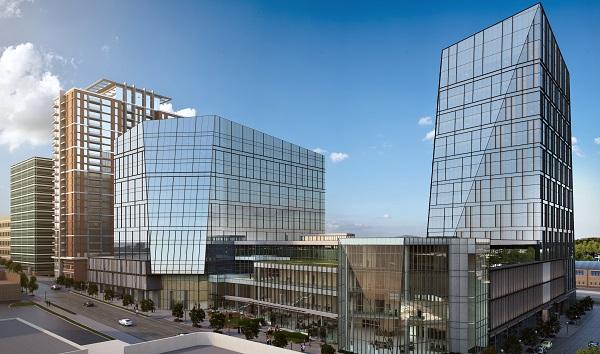
THE GROW TH OF E-COMMERCE, and the impact on fulfillment, have altered the way companies must plan and design distribution facilities. There are many more variables that must be considered and that has a big impact on facility planning. The following are just a few to consider.
Labor
E-commerce and omnichannel fulfillment requires more labor-intensive unit picking, especially during peaks. More labor is required for unit picking and packing than for bulk (case or pallet) movement. When selecting a site, the availability of workers and skills of the labor pool must be considered. Can you quickly ramp up a temporary labor force to support peak seasons? Is the labor market deep enough to keep the facility adequately staffed over time?
Automation and Speed
E-commerce drives the need for faster fulfillment, which is often supported by automation. But the facility requirements for automation can be very different from a traditional warehouse. For example, you’ll need to support higher electrical loads and you may need different kinds of dock doors so that product can flow directly onto trucks instead of being staged and loaded in pallets. As you move toward faster fulfillment, with or without automation, the facility yard requirements may change. Inbound and outbound scheduling of trucks must be designed for efficiency. The need to turn trucks faster may mean you need more dock doors and better facility and yard management.
Expansion
One of the biggest mistakes companies make is not setting up their buildings so they can be easily expanded as their business changes. As E-commerce orders increase as a percent of sales and order profiles change over time, companies must be ready to easily expand and redesign their operations. The areas and processes that support unit fulfillment should be designed for expansion, with space to seamlessly add resources without the need to tear out existing equipment. Elements such as floor flatness specifications, clear heights and building firewalls need to be determined with growth and expansion in mind.
Flexibility
Today’s distribution facilities require greater flexibility to adapt to changing requirements. Can the facility handle a shift toward smaller, more frequent deliveries to stores? What if your customers suddenly ask you to do more direct shipments? Can you accommodate store-ready deliveries? Can your processes be adapted for same-day or same-hour fulfillment cycles for competitive advantage? To plan and design a distribution center with the flexibility to adapt to change, you will need to look at refined, detailed growth forecasts that consider the percentage of unit versus case volume and quantity of weekly store deliveries. Consider all the ways the business might evolve as the role of the store changes over time. These refinements change how a distribution center operates and how you must plan and design facilities. It all comes down to striking a balance between investment and flexibility.
Business Case
Justifying capital investments is no longer based solely on cost. The business case more often includes things like supporting growth and reducing inventory. And in a shrinking labor market, automation investments are sometimes justified by the lack of sufficient labor, especially during peak season. The possibility that distribution won’t be able to meet the needs of the business represents enough risk to be included in the business case as well.
Summary
These are just a few of the ways facility planning and design have changed due to new E-commerce and omnichannel requirements. Longer term, however, companies will also need to look at requirements imposed by environmental regulation and customer expectations for greener supply chains. In addition, the evolution of technology such as robotics, automation and drone deliveries will play a larger role in the future.

